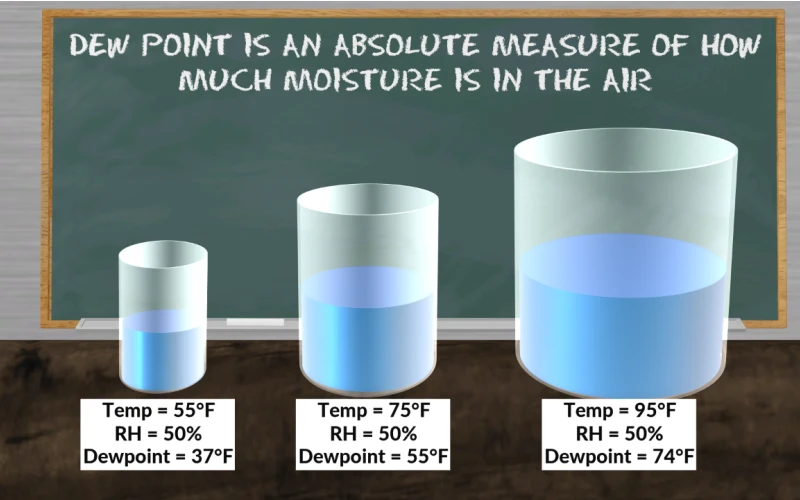High Dew Point Conditions and Their Impact on Weather Patterns

# High Dew Point Conditions and Their Impact on Weather Patterns
## Understanding High Dew Point
High dew point conditions occur when the air contains a significant amount of water vapor, making it feel more humid and uncomfortable. The dew point is the temperature at which air becomes saturated with moisture, leading to condensation. When the dew point is high, it indicates that the air is holding a large amount of water vapor, which can have various effects on weather patterns and human comfort.
## How High Dew Point Affects Weather
High dew point conditions often lead to increased humidity levels, which can influence weather in several ways:
– Increased likelihood of precipitation
– Formation of dense fog
– More intense thunderstorms
– Reduced visibility
– Higher heat index values
## Human Comfort and Health Implications
When dew points rise above 65°F (18°C), most people begin to feel uncomfortable. At dew points above 70°F (21°C), the air feels oppressive, and above 75°F (24°C), conditions become dangerous for outdoor activities. High dew points can:
– Make it harder for the body to cool itself through sweating
– Increase the risk of heat-related illnesses
– Aggravate respiratory conditions
– Cause general discomfort and fatigue
## Regional Variations in High Dew Point Conditions
Different regions experience high dew point conditions at different times of the year:
– Tropical regions: Consistently high dew points year-round
– Temperate regions: Seasonal high dew points, typically in summer
– Arid regions: Rare high dew point occurrences
– Coastal areas: More frequent high dew point conditions due to water evaporation
## Forecasting and Preparing for High Dew Point Conditions
Meteorologists use dew point measurements to predict weather patterns and potential severe weather events. When high dew points are forecasted, it’s important to:
– Stay hydrated
– Limit strenuous outdoor activities
– Use air conditioning when possible
– Monitor weather alerts for potential storms
– Be aware of the heat index, which combines temperature and humidity
## The Role of High Dew Points in Climate Change
As global temperatures rise, scientists observe that dew points are also increasing in many regions. This trend may lead to:
– More frequent and intense heat waves
– Changes in precipitation patterns
– Increased energy demand for cooling
– Shifts in agricultural growing seasons
– Potential impacts on ecosystems
Understanding high dew point conditions helps us better prepare for their effects on weather, health, and daily activities. By monitoring dew point forecasts and taking appropriate precautions, we can mitigate some of the challenges posed by these humid conditions.
Keyword: high dew point